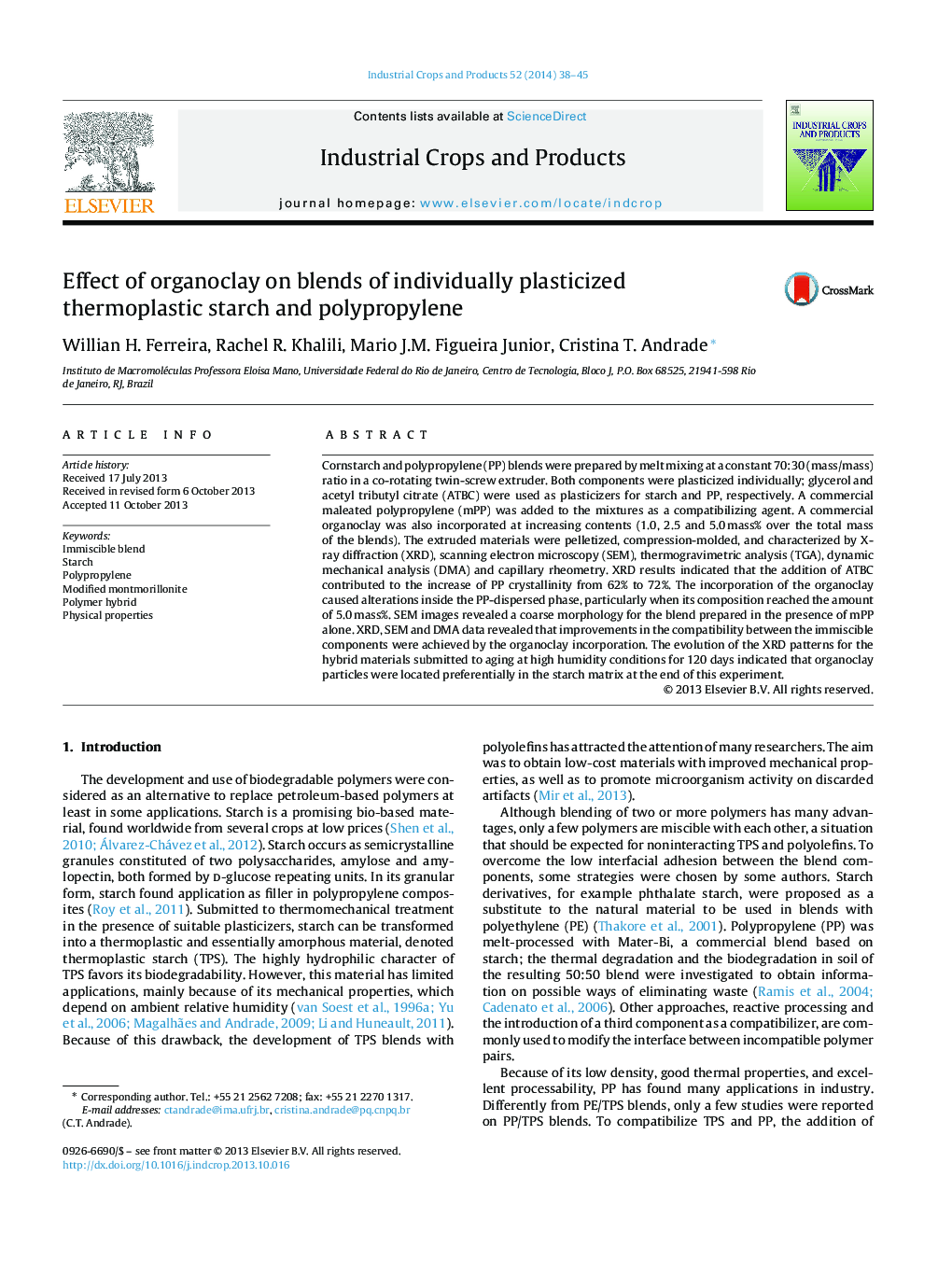| کد مقاله | کد نشریه | سال انتشار | مقاله انگلیسی | نسخه تمام متن |
|---|---|---|---|---|
| 4513451 | 1624857 | 2014 | 8 صفحه PDF | دانلود رایگان |

• A maleated polypropylene sample was ineffective to compatibilize cornstarch and polypropylene.
• Glycerol and acetyl tributyl citrate were mixed with each constituent, as plasticizers.
• The incorporation of a commercial organoclay affected properties and improved morphologies.
• Results indicated the incorporation of some amount of the organoclay in the polypropylene phase.
• Aging at high humidity conditions caused migration of organoclay particles.
Cornstarch and polypropylene (PP) blends were prepared by melt mixing at a constant 70:30 (mass/mass) ratio in a co-rotating twin-screw extruder. Both components were plasticized individually; glycerol and acetyl tributyl citrate (ATBC) were used as plasticizers for starch and PP, respectively. A commercial maleated polypropylene (mPP) was added to the mixtures as a compatibilizing agent. A commercial organoclay was also incorporated at increasing contents (1.0, 2.5 and 5.0 mass% over the total mass of the blends). The extruded materials were pelletized, compression-molded, and characterized by X-ray diffraction (XRD), scanning electron microscopy (SEM), thermogravimetric analysis (TGA), dynamic mechanical analysis (DMA) and capillary rheometry. XRD results indicated that the addition of ATBC contributed to the increase of PP crystallinity from 62% to 72%. The incorporation of the organoclay caused alterations inside the PP-dispersed phase, particularly when its composition reached the amount of 5.0 mass%. SEM images revealed a coarse morphology for the blend prepared in the presence of mPP alone. XRD, SEM and DMA data revealed that improvements in the compatibility between the immiscible components were achieved by the organoclay incorporation. The evolution of the XRD patterns for the hybrid materials submitted to aging at high humidity conditions for 120 days indicated that organoclay particles were located preferentially in the starch matrix at the end of this experiment.
Figure optionsDownload as PowerPoint slide
Journal: Industrial Crops and Products - Volume 52, January 2014, Pages 38–45